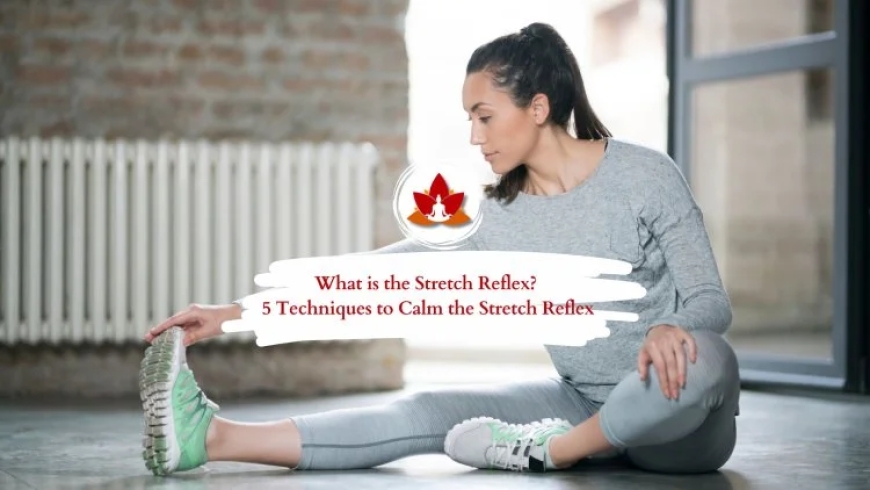Understanding Reflex Stretch: How Your Body Protects and Performs
Reflex stretch is a natural, involuntary response that occurs when a muscle is quickly stretched, triggering it to contract in order to protect itself from injury. This mechanism, also known as the stretch reflex, plays a crucial role in maintaining posture, balance, and muscle tone. Understanding reflex stretch is essential for athletes, physical therapists, and anyone interested in improving flexibility and preventing muscle strain.

The reflex stretch, also known as the stretch reflex, is one of the body's most vital neuromuscular responses. It plays a key role in protecting muscles from injury, maintaining posture, and aiding in fluid movement. Whether you're an athlete pushing your performance, a physical therapist working on rehabilitation, or simply someone interested in how your body works, understanding the reflex stretch can help you optimize movement and avoid injury.
What Is Reflex Stretch?
The reflex stretch is an involuntary muscle contraction that occurs when a muscle is rapidly stretched. This reaction is mediated by the muscle spindlea specialized sensory receptor located within the muscle. When a muscle is suddenly lengthened, the muscle spindle detects the change and sends a signal to the spinal cord. In response, the spinal cord sends a signal back to the same muscle, causing it to contract immediately. This rapid feedback loop occurs without conscious thought and is designed to protect the muscle from overstretching and tearing.
How the Reflex Stretch Works
To understand how the reflex stretch works, imagine someone tapping your knee with a reflex hammera common test performed by doctors. This causes the quadriceps muscle to stretch slightly, triggering the muscle spindle. The reflex pathway sends a signal to contract the quadriceps, causing the familiar "knee jerk" response. This same principle applies throughout the body, helping muscles respond quickly to changes in position or load.
Why Reflex Stretch Matters
-
Injury Prevention
The reflex stretch is your bodys natural defense against muscle strain. By triggering a quick contraction in response to a sudden stretch, it helps stabilize joints and prevent excessive muscle lengthening that could lead to injury.
-
Balance and Posture
Reflexive muscle contractions support fine motor control, balance, and posture. When standing or moving, your muscles constantly undergo small adjustments through reflex stretch responses to keep you upright and steady.
-
Athletic Performance
In sports and fitness, the reflex stretch can be both helpful and limiting. Dynamic movements like jumping and sprinting rely on quick reflexes and muscle activation. However, excessive or premature reflex stretching during stretching exercises can limit flexibility, which is why it's important to manage how you stretch.
Reflex Stretch and Flexibility Training
One of the challenges with flexibility training is managing the reflex stretch response. When you stretch a muscle too quickly or forcefully, the reflex can cause it to contract, making it harder to lengthen. To overcome this, many flexibility techniques involve slow, controlled stretching. For example:
-
Static stretching involves holding a stretch for 2030 seconds, allowing the muscle spindle to become less sensitive over time, thus reducing the reflex response.
-
Proprioceptive Neuromuscular Facilitation (PNF) stretching often combines contraction and relaxation phases to bypass the reflex stretch and achieve greater flexibility.
-
Dynamic stretching, when done properly, uses movement to warm up muscles without triggering an intense reflex response.
Practical Applications in Rehabilitation and Training
In physical therapy and rehabilitation, the reflex stretch is an important consideration. Therapists often use controlled movements and stretches to retrain the reflex response in patients recovering from injury. In strength and conditioning programs, coaches may use plyometric training to enhance reflex timing and efficiency, helping athletes move more powerfully and safely.
Final Thoughts
The reflex stretch is an essential part of human physiology that supports movement, protects muscles, and contributes to overall function. By understanding how it works and how to work with itnot against ityou can improve your flexibility, performance, and injury resilience. Whether you're stretching in a yoga class or sprinting down a field, your bodys reflex stretch is always at work behind the scenes.







































